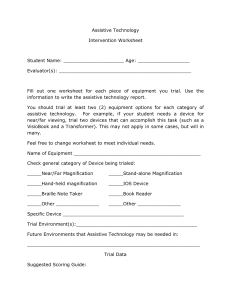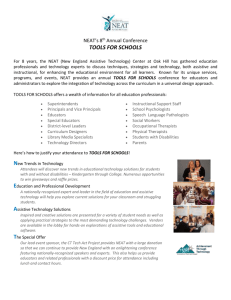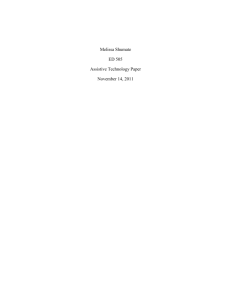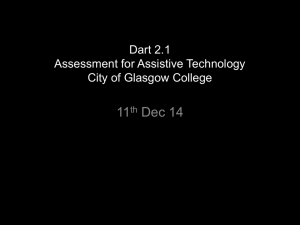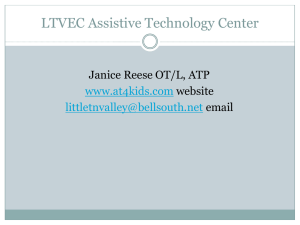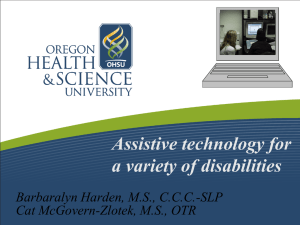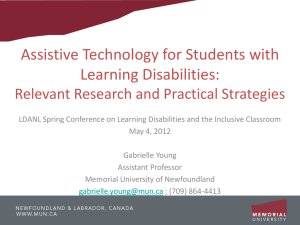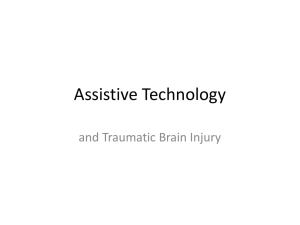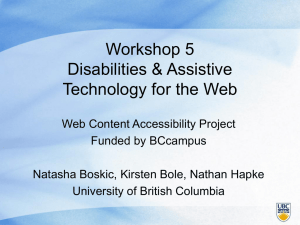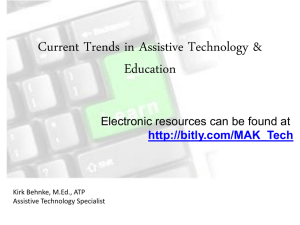High School to College Student
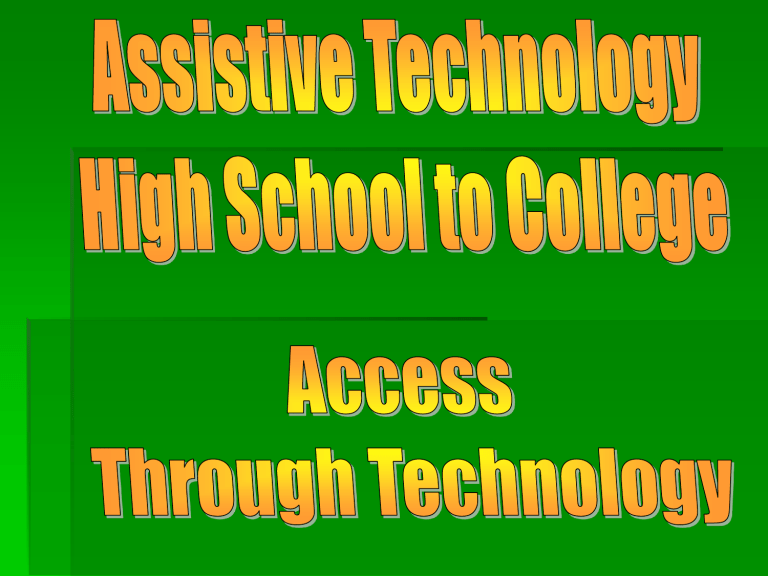
The Governing Laws
Change
High School College
The applicable law is the
Individuals with Disabilities
Education Act or IDEA.
IDEA guarantees each student a Free and Appropriate Public
Education. IDEA is about success.
The applicable law is the
Americans with Disabilities Act or the ADA, the ADA
Amendments Act of 2008 and
Section 504 and 508 of the
Rehabilitation Act.
ADA guarantees equal access to college programs and facilities. The ADA is about access.
WHAT IS ASSISTIVE TECHNOLOGY?
Assistive Technology includes assistive, adaptive and rehabilitation devices for people with disabilities.
For example, people with limited hand function may use a keyboard with large keys or a special mouse to operate a computer, people who are blind may use software that reads text on the screen in a computergenerated voice, people with low vision may use software that enlarges screen content, people who are deaf may use a TTY (text telephone), or people with speech impairments may use a device that speaks out loud as they enter text via a keyboard.
ASSISTIVE TECHNOLOGY IS
AVAILABLE - AND USEFUL ! - IN
EDUCATIONAL SETTINGS.
Assistive Technology is not just for students with sensory impairments.
Asssitive Technology provides many of the services provided to students with learning disabilities, mental health impairments and other disabilities by staff at the high schools or in a home school setting.
WHERE DO I FIND ASSISTIVE
TECHNOLOGY ON COLLEGE CAMPUSES?
There is at least one office that maintains equipment with assistive technology for student use. On most campuses, this office is the Disability
Support Services Office, but other areas, such as the Library, the
Academic Support Center, the
Learning Center, etc. may also house assistive technology for student use.
WHY DO I NEED ASSISTIVE
TECHNOLOGY?
Assistive Technology offers educational material in alternative formats.
Very few colleges will provide human readers.
On most campuses, text books are available on CD ROMS for people with printrelated disabilities, tests are made available on computers to be “read” by text readers, etc.
More and more colleges are encouraging students to get class notes through AT and distance learning sites, rather than hiring note takers.
Types of Assistive
Technology
Text Readers – Software programs that read electronic text and convert them to speech.
Digital Recorders – Miniature Recording Devices with various options that record verbal lectures into sound files.
Speech-to-Text Programs – Allow students to convert spoken words in to text.
Screen Magnification Software – Enlarges and enhances everything on the computer screen for low-vision users.
More Assistive
Technology
Screen Magnification Software – Enlarges and enhances everything on the computer screen for low-vision users.
Pen Scanners and Reading Pens – Hand held devices are miniature scanners with optical character reading and voice recording capability.
Talking Calculators and Dictionaries – A talking calculator has a built-in speech synthesizer that reads aloud each number, symbol or operation key a user presses; it also vocalizes the answer to the problem. A talking dictionary will read the word and definition aloud.
Both are available in hand-held models or as software programs.
APPS, APPS, APPS!
Before purchasing software, check your smartphone, smartpad, or smartpen for assistive technology apps.
In some cases, the technology is available as a free app!


